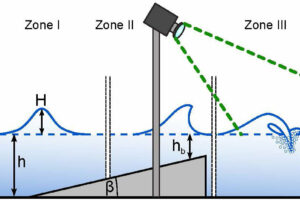The current war in Ukraine has resulted in widespread destruction and death, with millions of Ukrainians fleeing to neighboring countries. When the war begins to wind down, Ukraine can begin to look towards leveraging financial aid to support sustainable and resilient development. Rebuilding with sustainability in mind will allow for a more equitable, resilient, and green Ukraine for its citizens and future generations.
The war has resulted in 14 million displaced people, 7.8 million refugees, and an estimated 131,000 destroyed residential buildings to date. A recent survey shows that 72% of refugees would like to return to their homes. Ukraine could use the opportunity offered by post-war recovery to build neighborhoods that are healthier, more sustainable, and more livable than before.
For example, communities could be rebuilt to be better connected and walkable by linking residential buildings and houses with services and businesses. When reconstructing neighborhoods, city planners could create “20-minute neighborhoods,” which provide local public transport, safe cycling networks, walkable areas, and green streets and spaces to achieve lower emissions and less car use. Integrating historic architecture and soliciting feedback from returning citizens could help in the creation of the best spaces for the residents. Better connected neighborhoods that rely on public transit and cycling could also reduce Ukraine’s dependence on petrol, which is becoming scarcer and more expensive.
As of 2020, only 3% of the housing stock of Ukraine was new, with much of the rest at least 40 years old, due to decades of underinvestment. Russia’s targeting of infrastructure has further exacerbated Ukraine’s building environment challenges. Government agencies should place energy-efficient housing at the core of sustainable development efforts in Ukraine, especially since buildings account for approximately 40% of its total energy use. Green buildings have the added bonus of lower operational costs stemming from the integration of intelligent HVAC, windows, and lighting technologies that lead to more efficient use of water and energy. Electrified heating systems can safeguard citizens in times of scarcity and improve the health of citizens through better air quality and reduced noise pollution compared to traditional housing.
The use of solar and wind microgrids could offer a local, sustainable, and more resilient option than relying solely on the central grid. In 2014, 11% of Ukraine’s electric power was lost in transmission, much of which could be eliminated through microgrids. Although microgrids are typically connected to the central grid, batteries can be used to ensure consistent power flow, even in case of disruption, making transmission hubs less vulnerable. Combining intelligent software with batteries can also result in cost savings for the community. Stored battery power could be used during peak demand when energy costs are high, purchasing energy from the central grid when costs are low.
The Ukrainian government’s recovery plan is estimated to cost USD 750 billion. With Ukraine’s GDP declining by an estimated 35% this year alone, the recovery fund has been structured by coordinating with international donors and stimulating private investors. The government could support Ukrainian architects and city planners, transfer money to local communities, and support local businesses to ensure that investments are need-driven, equitable, and won’t disappear once foreign investment dries up.
While there is an opportunity to invest in new, more sustainable infrastructure, it is also critical for anti-corruption efforts to continue, including those promoting transparent government procurement processes and integrity of government permitting entities. In the wake of the tragedy of war, if Ukraine is successfully able to continue the reorganization of its political structure to address its governance and corruption issues, sustainable cities could offer healthier, safer, and more equitable spaces for future generations.
Lorenzo Cinalli and Alex Wolfe are Environmental Resource Policy graduate candidates at The George Washington University. Ranin Kurdi is an MS in Management graduate candidate at The George Washington School of Business.
Source : Sdg











Add Comment